- History / Culture
- Traditions / Performing Arts
No.f_0029
A Journey Through Japan’s Colors of White and Red
White—purity, sacredness, and renewal, a color central to rituals and celebrations. Red—the symbol of the sun, blood, life, and prayers for a bountiful harvest. In Hyogo Prefecture, the cities of Himeji and Ako offer a journey into these two symbolic hues, exploring the origins of Japanese aesthetics expressed through white and red.
Himeji’s White: A Color Honoring Peace
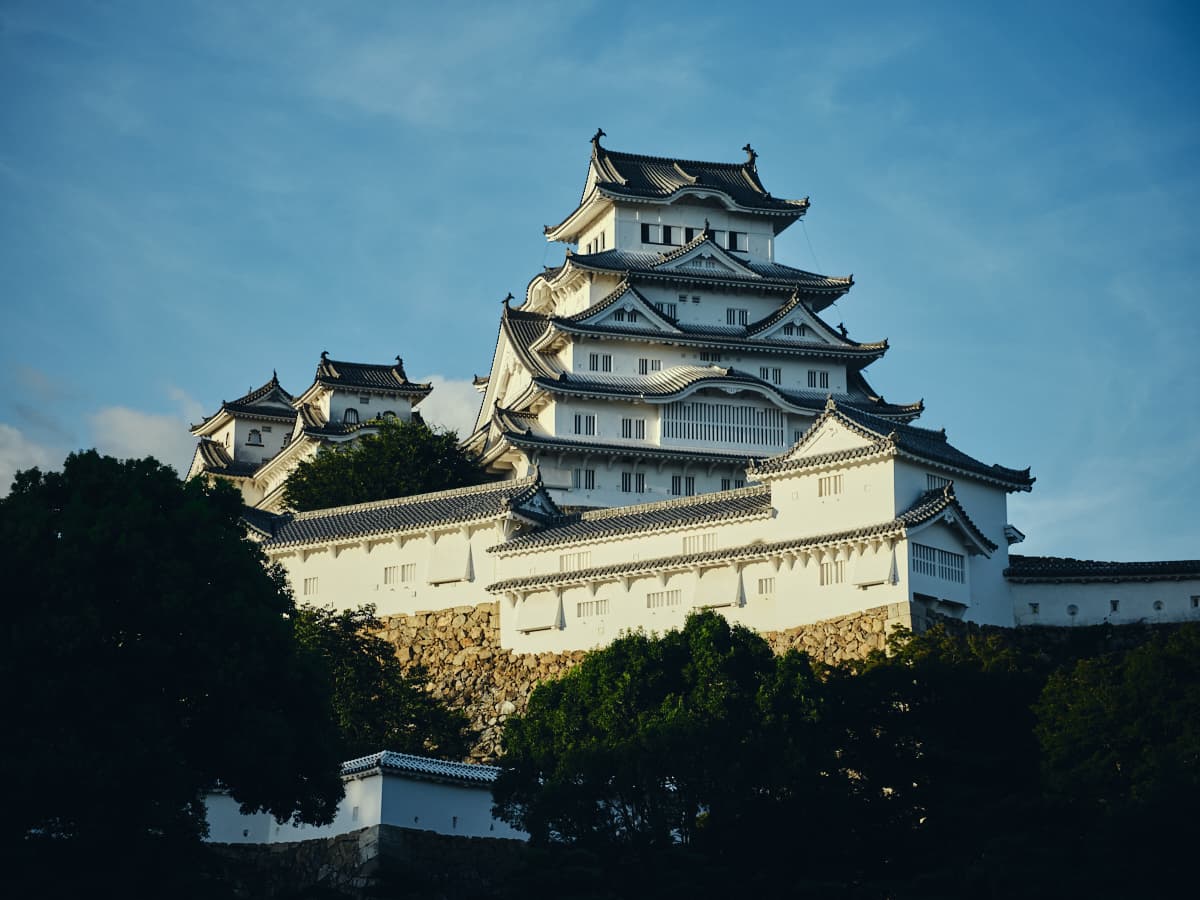 Sunlit white walls of Himeji Castle.
Sunlit white walls of Himeji Castle.
The most famous symbol of Himeji’s white is Himeji Castle, also known as Shirasagi-jō, or “White Heron Castle.”
After the Battle of Sekigahara in 1600, Ikeda Terumasa transformed the original castle built by Hideyoshi Toyotomi into the striking complex of towers that stand today. His successor, Tadamasa Honda, later added the Nishinomaru and Sannomaru baileys. For more than 400 years, this fortress of peace and survival, untouched by war and fire, has remained in remarkable condition. Recognized as a masterpiece of wooden architecture, Himeji Castle was inscribed as a UNESCO World Heritage Site in 1993, standing proudly as the city’s icon.
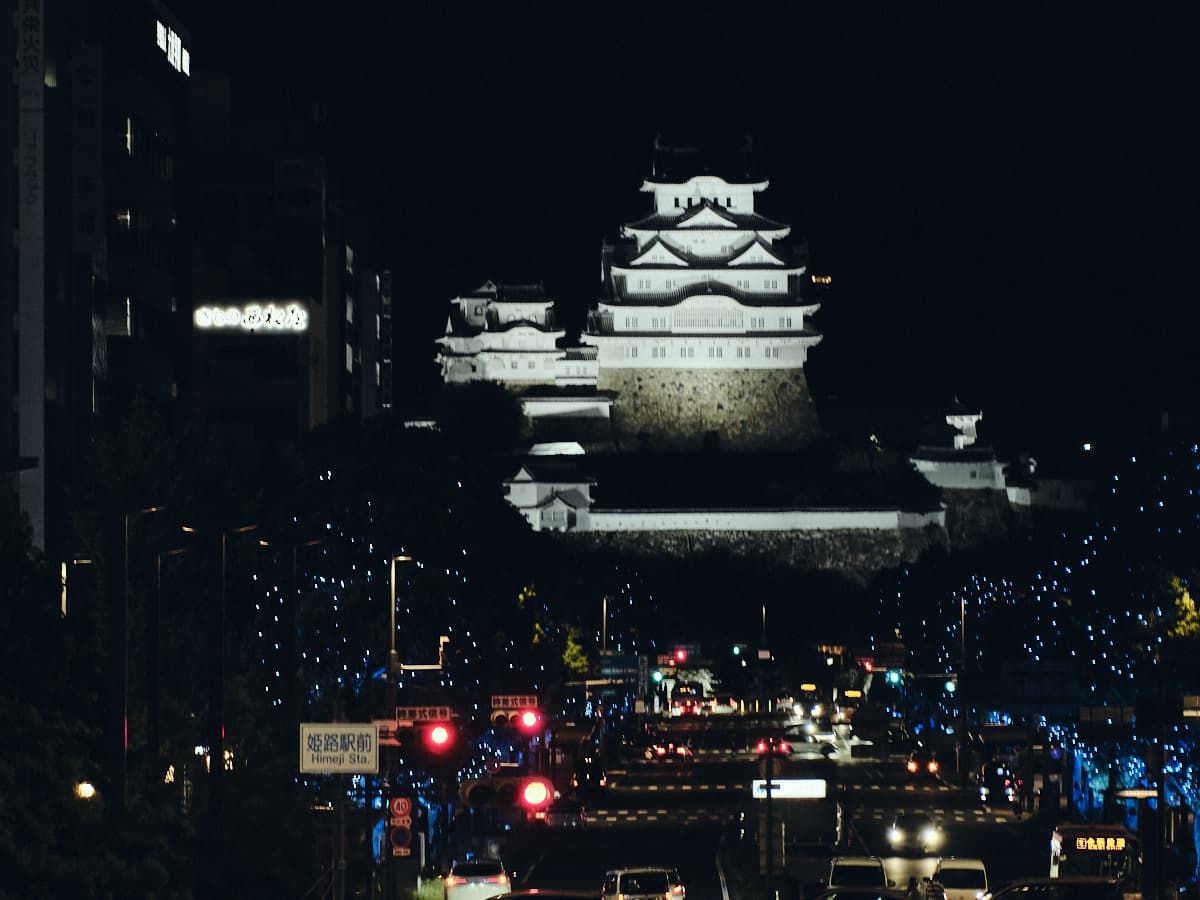 Himeji Castle seen from Himeji Station.
Himeji Castle seen from Himeji Station.
The castle’s pure white appearance comes from the shiro shikkui sōnurigome technique, where white plaster was applied not only to the walls but also between the roof tiles, giving the castle the look of a heron in flight. While the plaster served practical purposes of fire and water resistance, legend holds that Terumasa chose white to symbolize the end of the Sengoku or “Warring States” period. During World War II, camouflage nets were draped over the castle to protect it from air raids, and when the nets were removed, its dazzling white walls became a symbol of peace for local residents.
Arriving at Himeji Station, the castle greets visitors as a silent guardian watching over the city.
BOOK YOUR STAY IN HIMEJI
White Mineral: The Blessing of the Seto Inland Sea
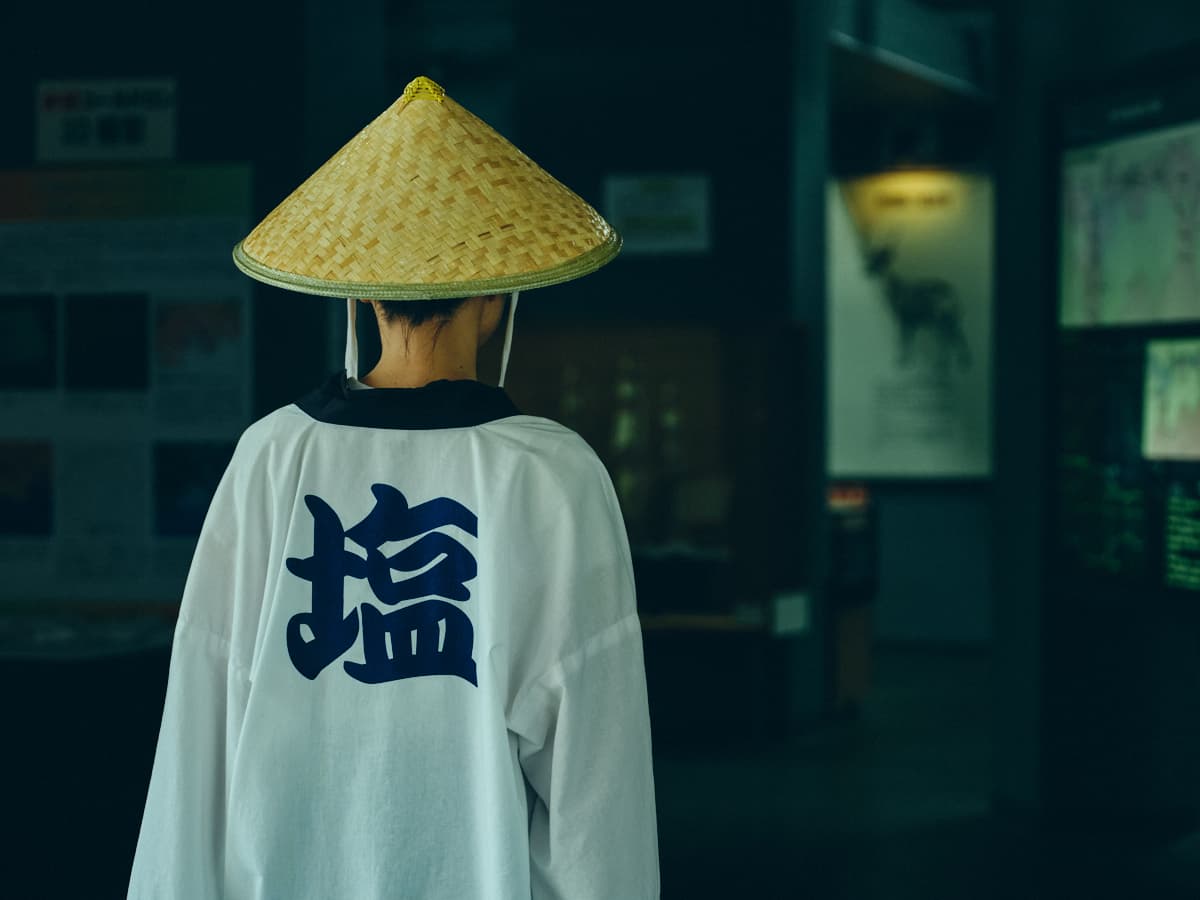 Try on traditional salt-maker attire at the Ako Marine Science Museum Shio no Kuni.
Try on traditional salt-maker attire at the Ako Marine Science Museum Shio no Kuni.
Salt—the white mineral essential to life.
Because Japan has no rock salt deposits, salt production from seawater has been carried out since ancient times. Blessed with tidal flats formed by the Seto Inland Sea and the Chikusa River, along with many sunny days, Ako was the perfect place for salt fields. In 1645, large-scale development of irihama-style salt fields, which used tidal flows and solar heat, made Ako famous as the “Land of Salt” (shio no kuni). Even today, though methods have changed, Ako still produces one-seventh of Japan’s salt.
 Bamboo device used to make kansui, or water condensed into brine, at irihama salt fields.
Bamboo device used to make kansui, or water condensed into brine, at irihama salt fields.
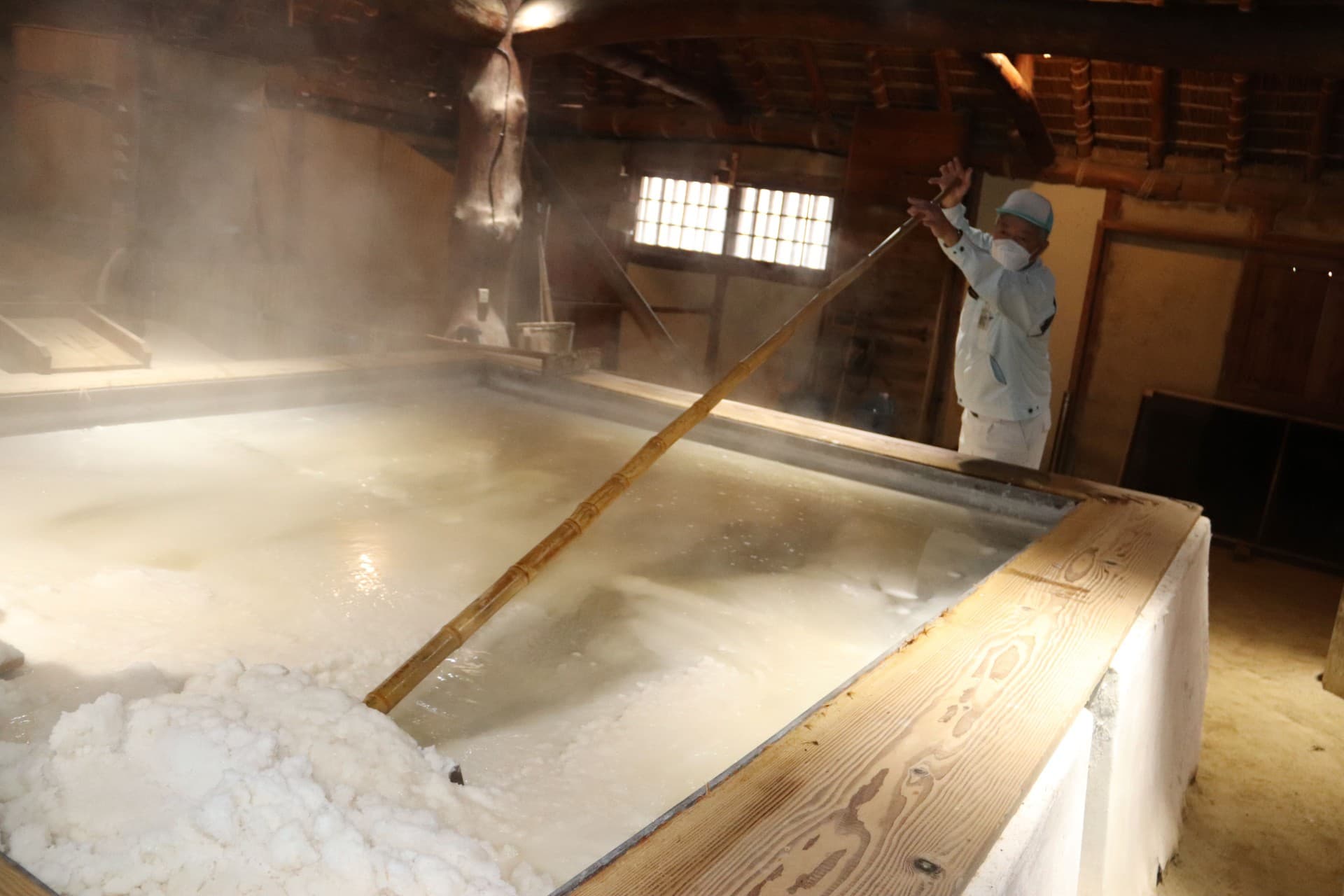 Boiling kansui in large cauldrons to produce salt.
Boiling kansui in large cauldrons to produce salt.
The salt-making tradition nurtured by Ako’s nature and wisdom has been recognized with Japan Heritage status. At the Ako Marine Science Museum Shio no Kuni (admission: adults 200 yen, children 100 yen), visitors can see and experience its history and techniques. Restored salt fields recreate past landscapes, and live demonstrations use seawater from the Seto Inland Sea.
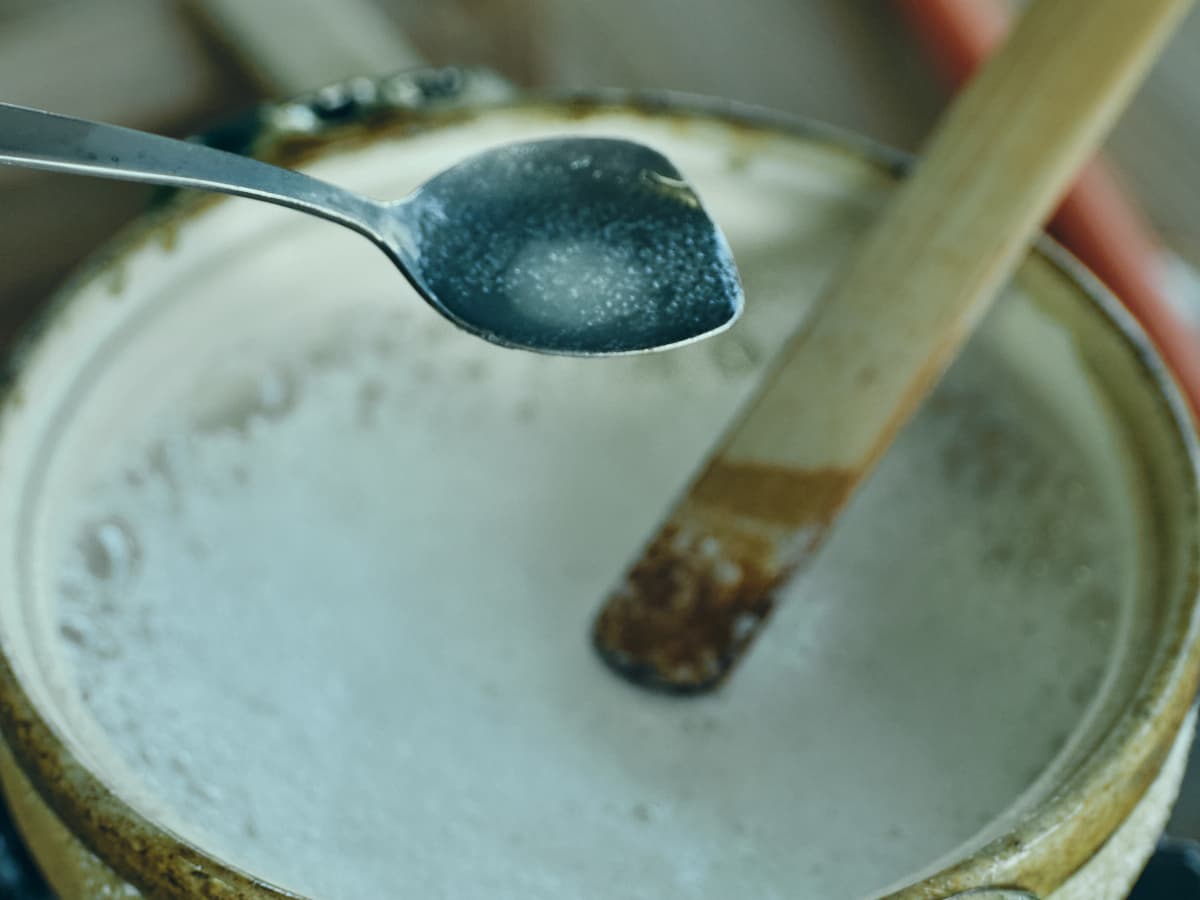 Salt crystals seen during the experience.
Salt crystals seen during the experience.
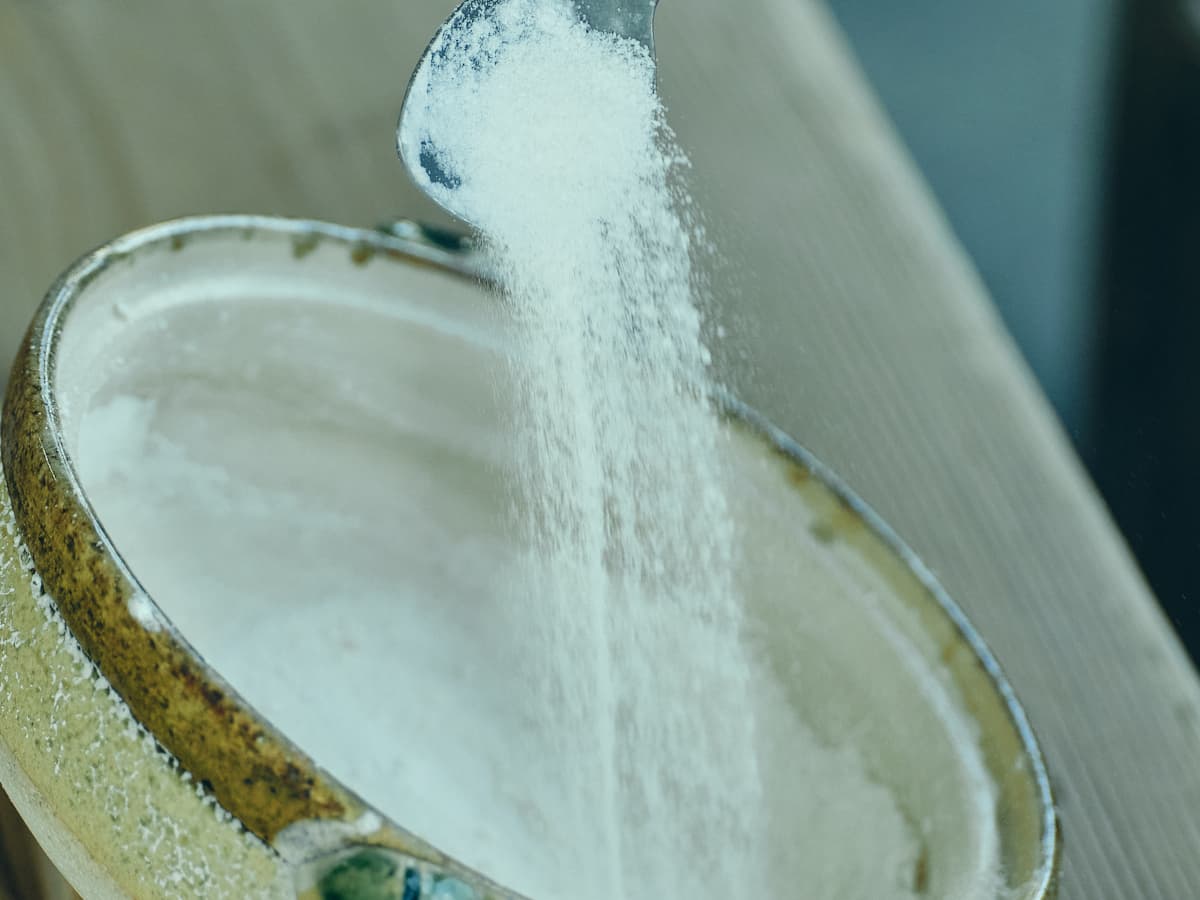 About 45g of salt made from 250ml of kansui.
About 45g of salt made from 250ml of kansui.
Visitors can even try salt-making for free. Using kansui—seawater concentrated into brine—participants stir it in an earthenware pot over heat, and in about five minutes, pure white salt crystals appear. While modernized, the basic principle of concentrating seawater and evaporating it to crystals remains unchanged.
The resulting salt, rich in minerals because the bittern is left in, has a mellow, full-bodied taste—why not visit and compare it with the sample salt given as a souvenir?
Milk of the Sea, Nurtured by Sea and Forest
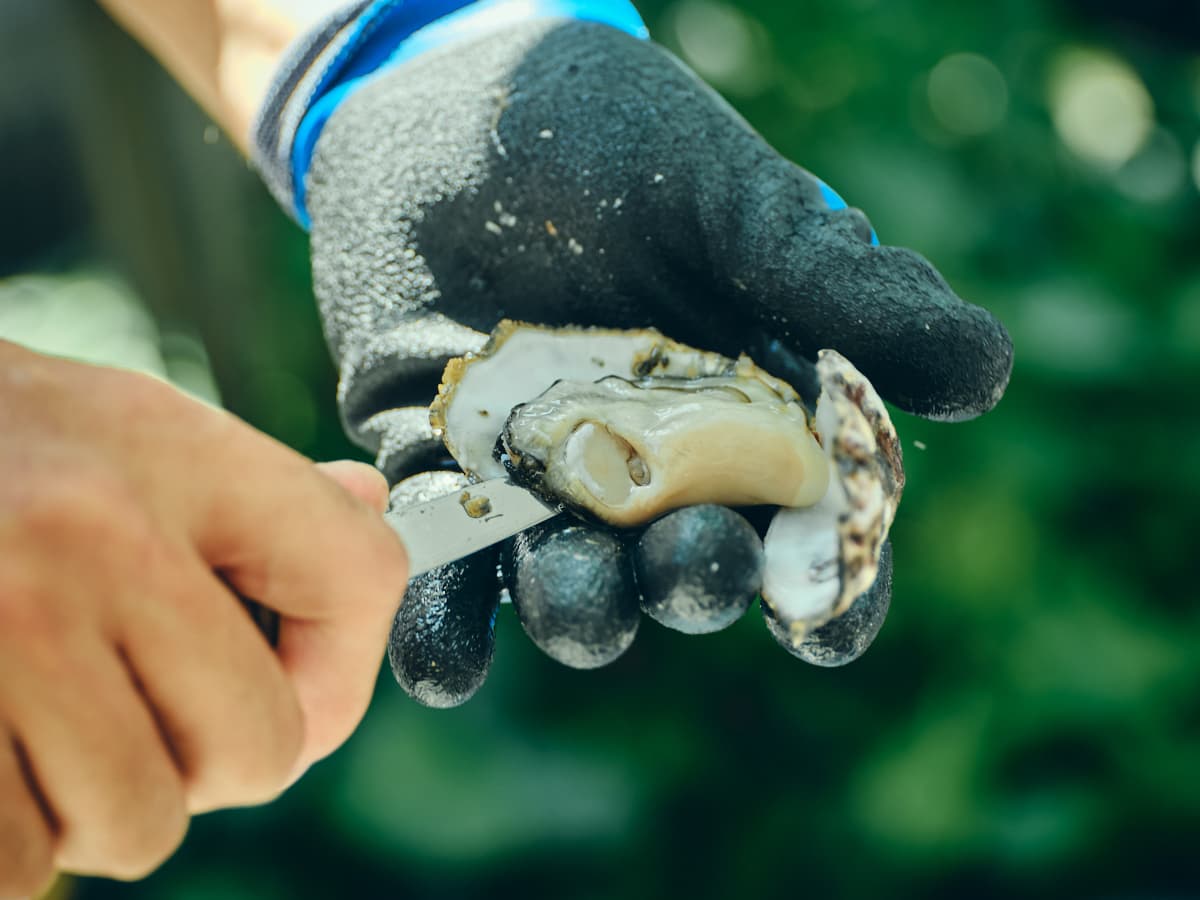 Plump Sakoshi oysters.
Plump Sakoshi oysters.
Another white treasure from Ako’s sea is oysters, known as the “milk of the sea.”
Sakoshi Bay, wide open to the Seto Inland Sea, is enriched by nutrients from the sacred forest of Ikishima and the Chikusa River. The oysters grown here, “Sakoshi oysters,” reach full size in just one year, earning them the name “one-year oysters.” They are large, plump, and full of flavor.
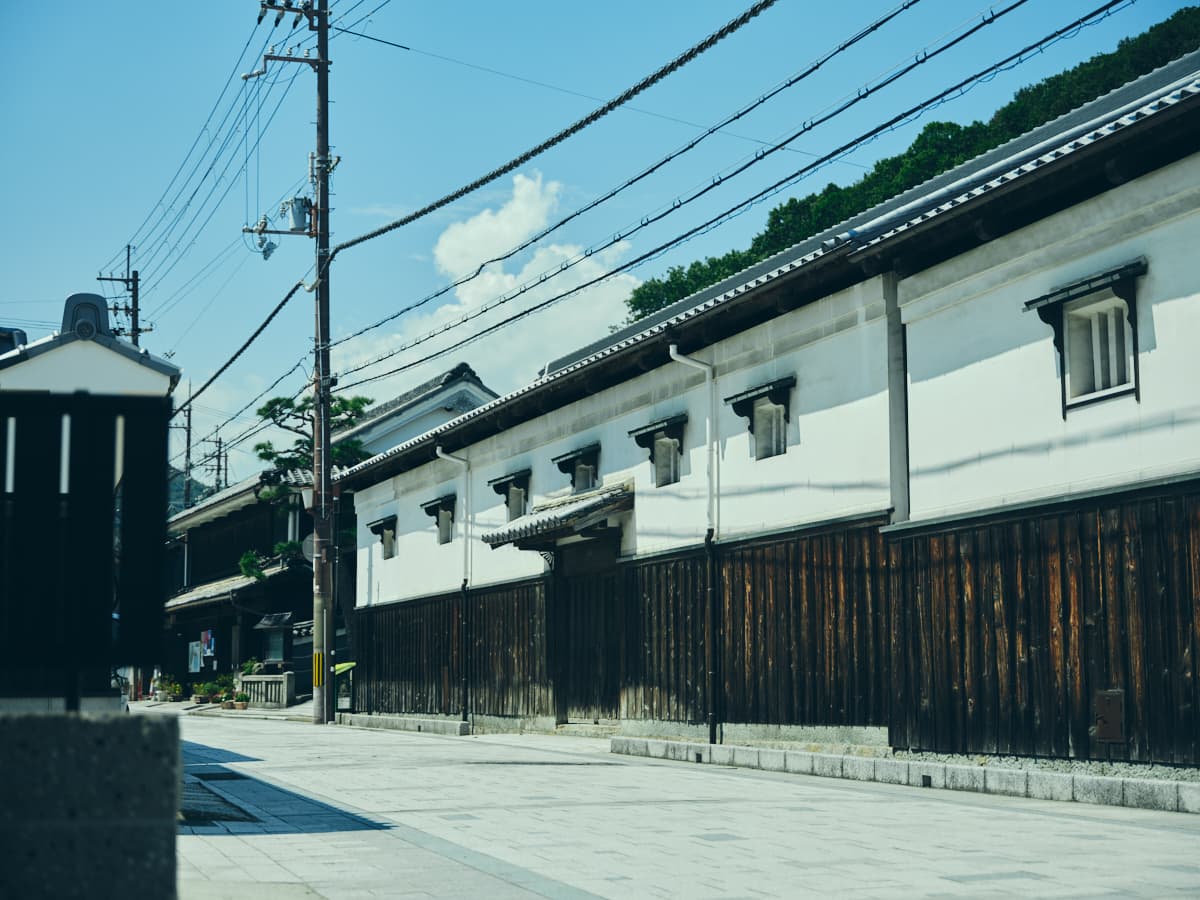 Streets of Sakoshi.
Streets of Sakoshi.
Sakoshi’s main street, the white-stone-paved Sakoshi Kaido, preserves the atmosphere of this historic port town. Along the street, Tenmasen, a direct outlet of the fisheries company Okawa Suisan, serves fresh Sakoshi oysters harvested in the bay.
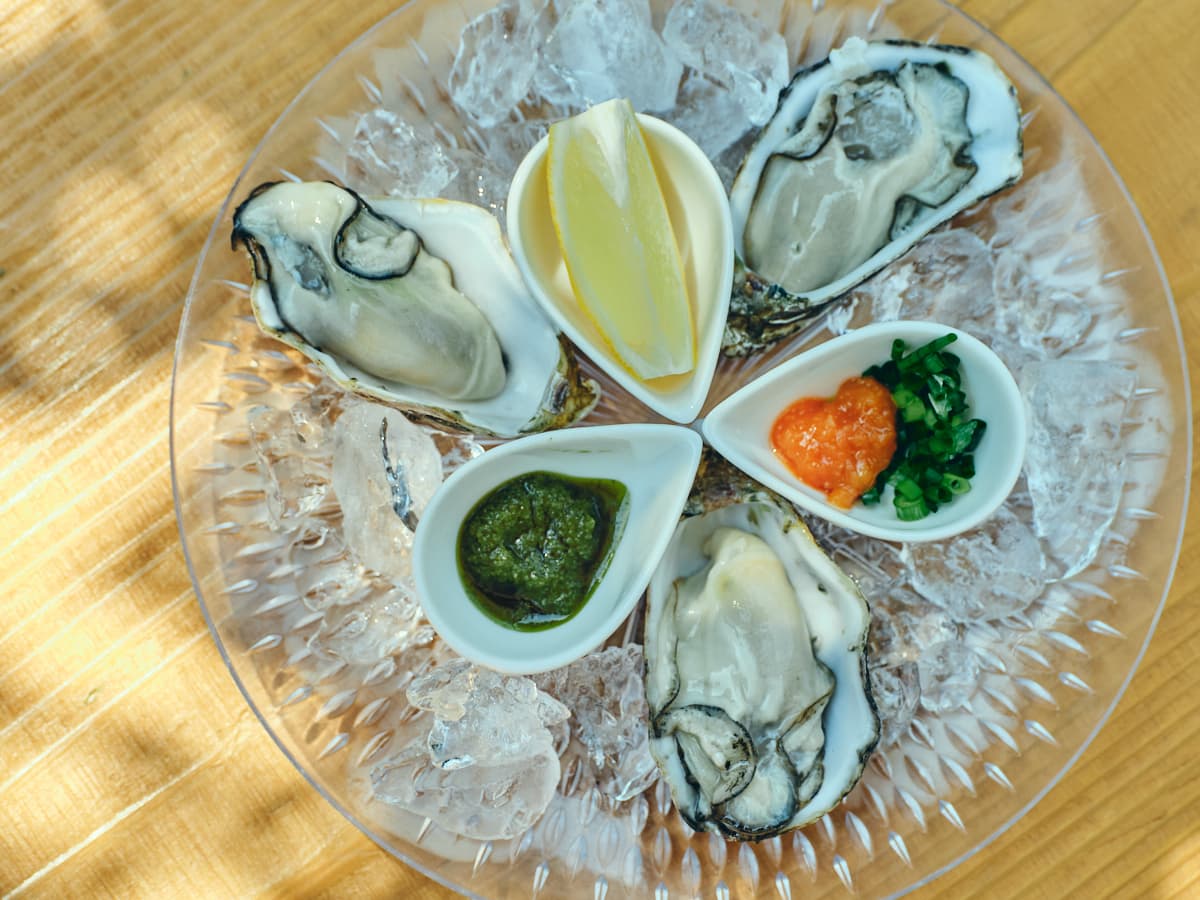 Raw oysters served three ways.
Raw oysters served three ways.
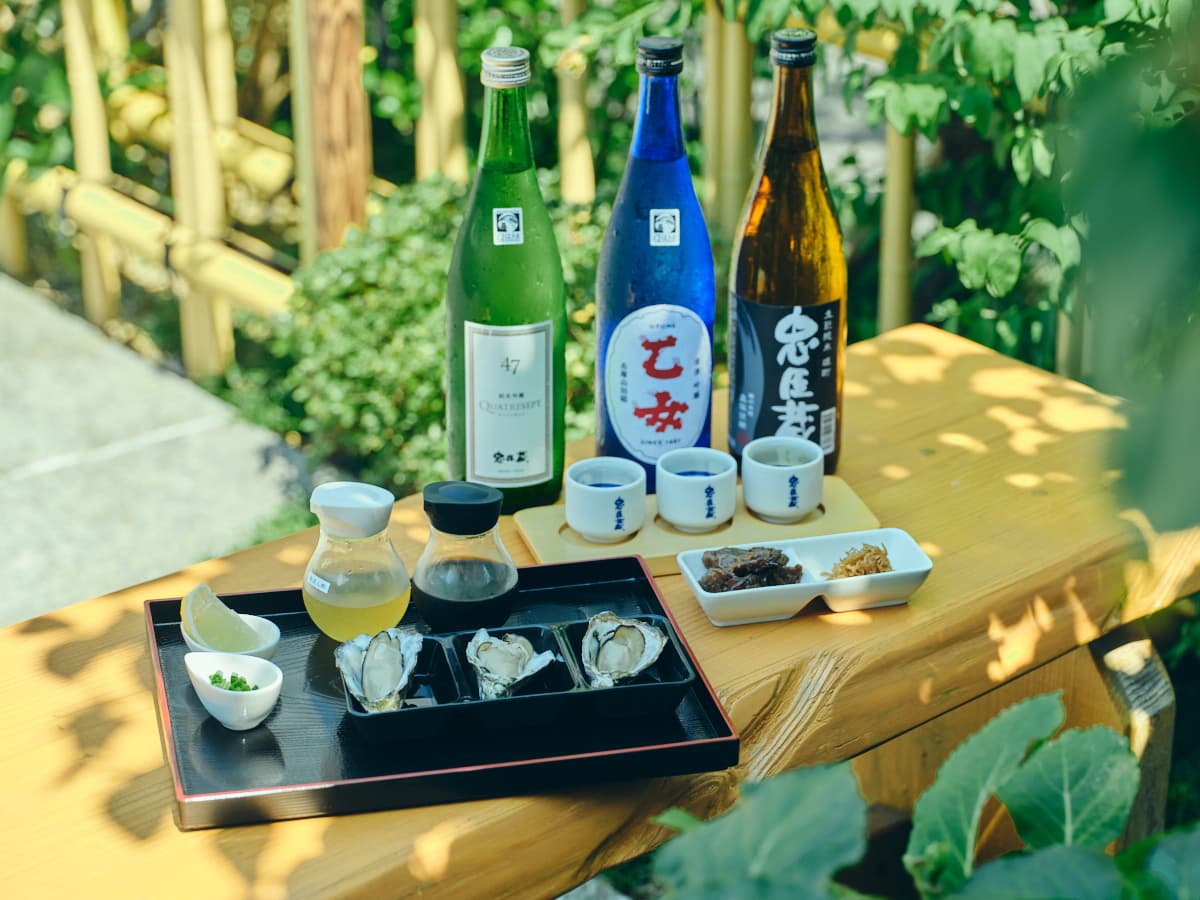 Local sake brewed with water from the Chikusa River and brewer’s rice from Harima pairs perfectly with oysters.
Local sake brewed with water from the Chikusa River and brewer’s rice from Harima pairs perfectly with oysters.
Raw oysters offer a creamy sweetness with a touch of briny aroma, while steamed oysters deliver concentrated umami. Both are free of bitterness, making a delicious treat even for those who usually avoid oysters. A sake tasting set (1,000 yen) at Okuto Shoji Brewery across the street is also popular, featuring three varieties: the boldly acidic Chushingura Kimoto Junmai Omachi, the mellow and sweet Ginjo Otome, and the aromatic, wine-like Chushingura Junmai Ginjo 47 Quatre Set.
Oysters—kaki in Japanese—carry a touch of poetry along with their briny sweetness. Rich in flavor and nutrients, they’re also thought to bring luck: a play on words suggests they “kaki-komu,” or “bring in” good fortune. A dish to savor, and perhaps a charm for health and happiness, too.
Pottery Born of Sunset Flames: Ako Unka-yaki
 Water jar by Yoshiko Momoi.
Water jar by Yoshiko Momoi.
Red finds its form in Ako Unka-yaki pottery.
Created in 1852 by Kokoku Oshima in Ako, this ceramic art is defined by its striking gradations of red and black that recall the drama of the Ako sunset. Yet, because Kokoku left no written record of his technique, Ako Unka-yaki long remained a so-called phantom pottery. Captivated by its beauty, ceramic artists Yoshiko Momoi and Kunihiko Nagamune spent 30 years recreating the method. The clay comes from Ako’s smooth, fine soil. No glaze is used: instead, potters expose parts of the vessel to flames for vivid reds, while other parts are bathed in smoke to deepen them into black. This is how Ako Unka-yaki was revived.
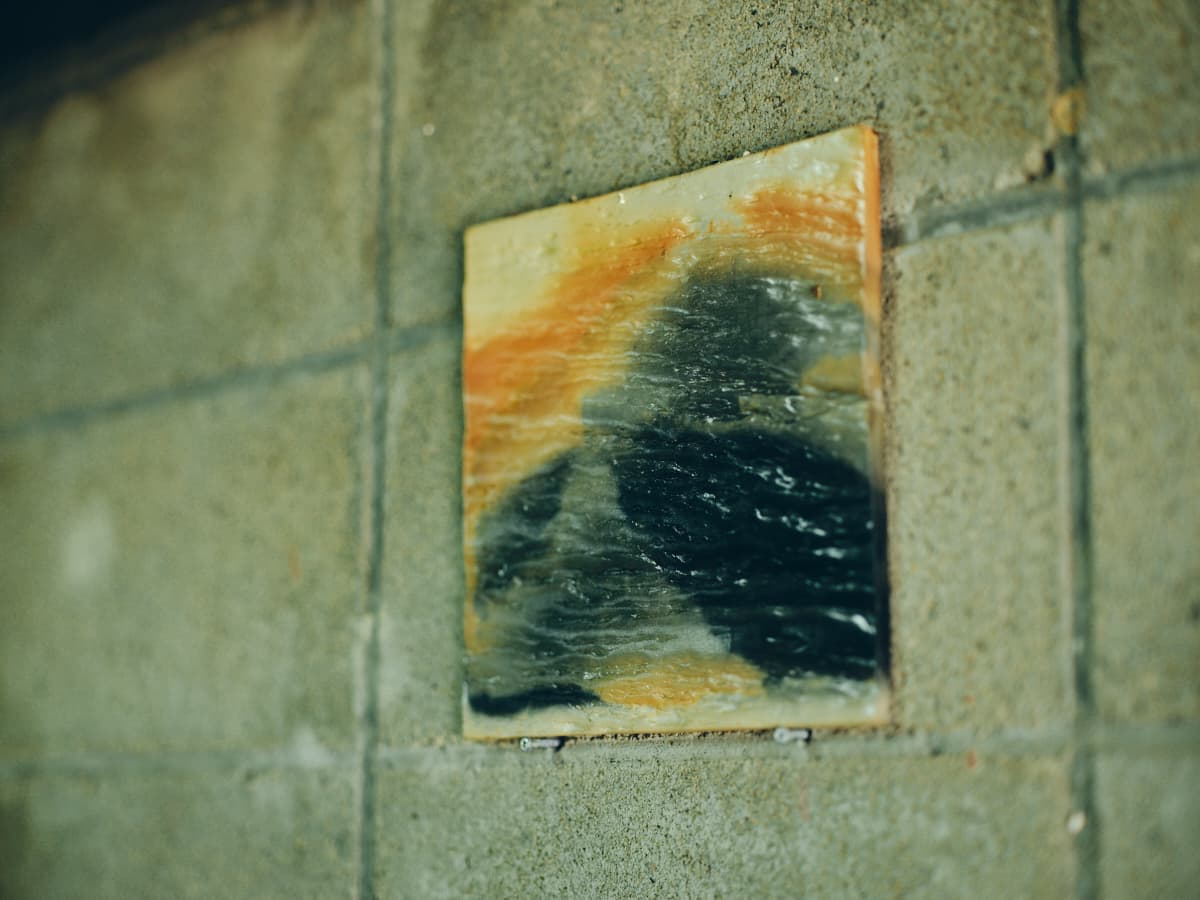 Distinctive, one-of-a-kind motifs of Ako Unka-yaki.
Distinctive, one-of-a-kind motifs of Ako Unka-yaki.
At the Momoi Museum, overlooking Ako Misaki, visitors can view and purchase Unka-yaki works, or even try their hand at making a salt jar (advance booking for two or more; 5,500 yen per person plus shipping). Workshops are led by museum director and ceramic artist Mitsuaki Nagamune, son of Kunihiko. “I am glad that Ako Unka-yaki, once a phantom pottery, has now begun to be created by many different hands,” he says.
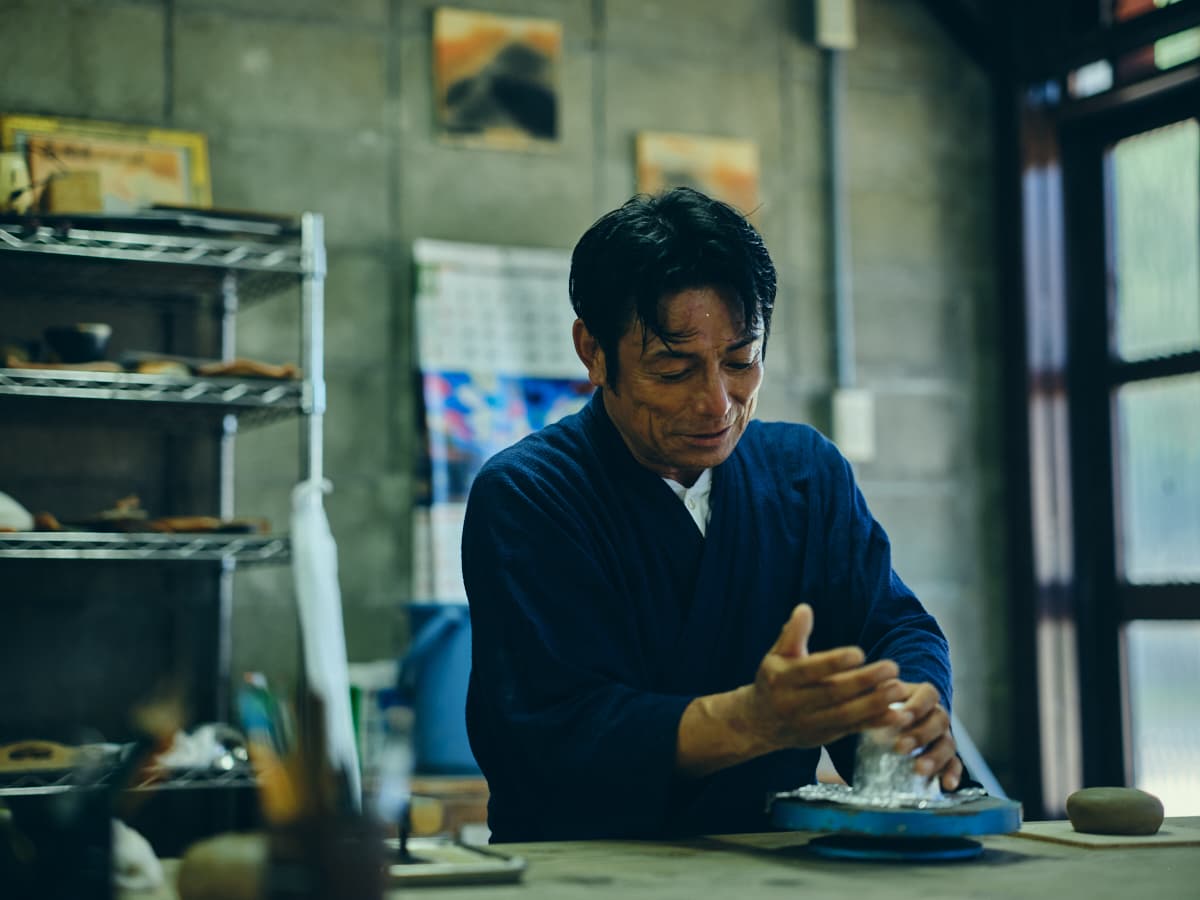 Salt jars are shaped by hand.
Salt jars are shaped by hand.
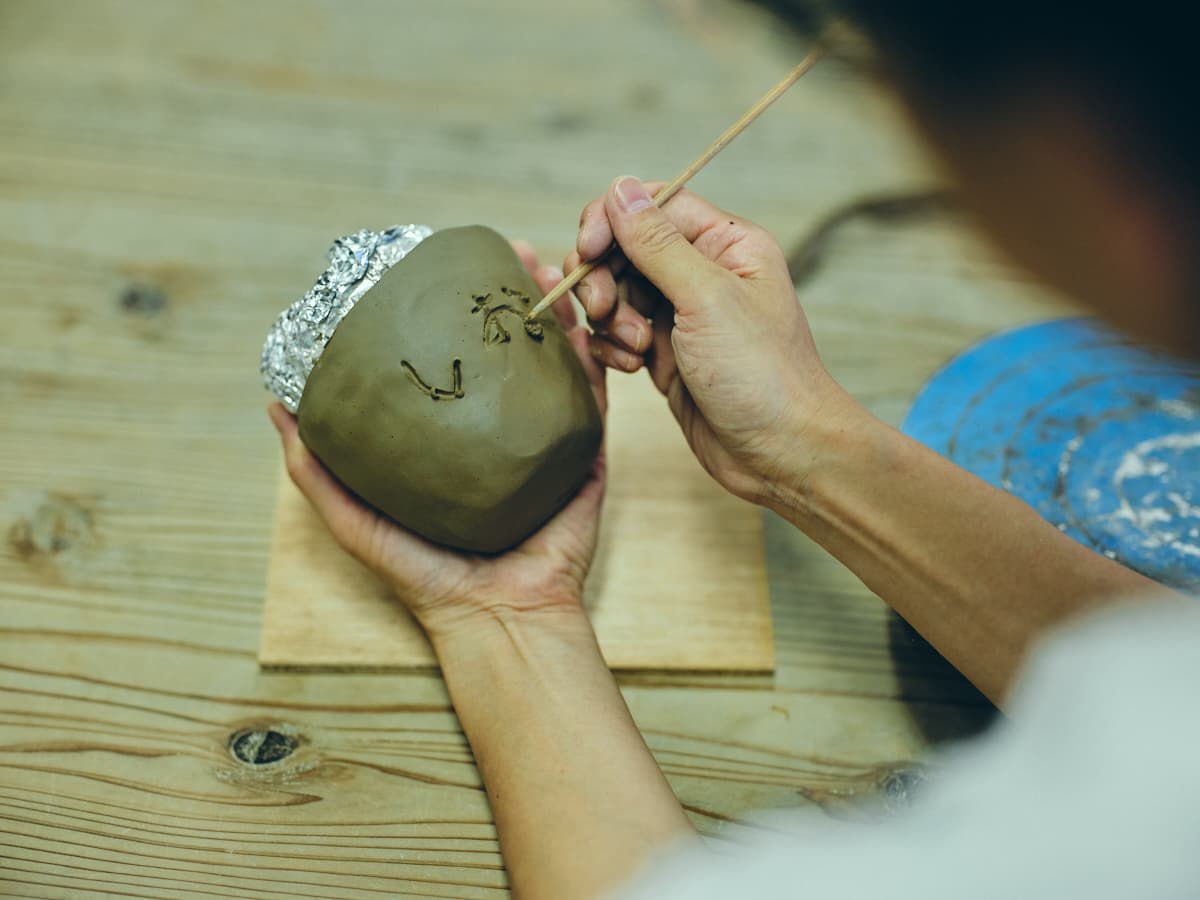 Participants add patterns in the final step — this one spells out ‘shio,’ or salt.
Participants add patterns in the final step — this one spells out ‘shio,’ or salt.
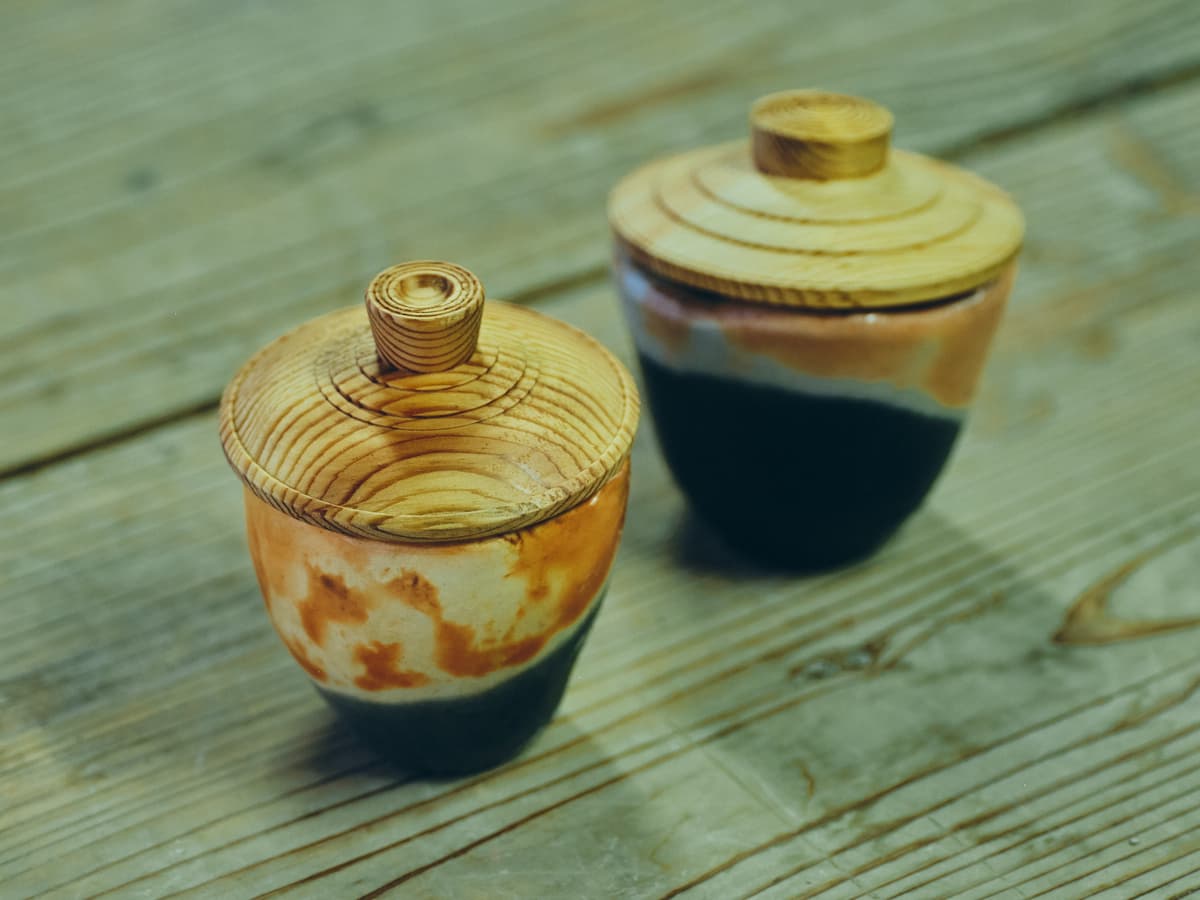 Finished jars are delivered after one to two months, once they have been fired.
Finished jars are delivered after one to two months, once they have been fired.
Because Unka-yaki is unglazed, the porous clay naturally absorbs moisture, keeping salt dry and free-flowing. White, a color symbolizing “rebirth,” could not be more fitting for this pottery. The exact shade of red that emerges can only be known once the piece is fired — but against the white of the salt, the contrast is always striking.
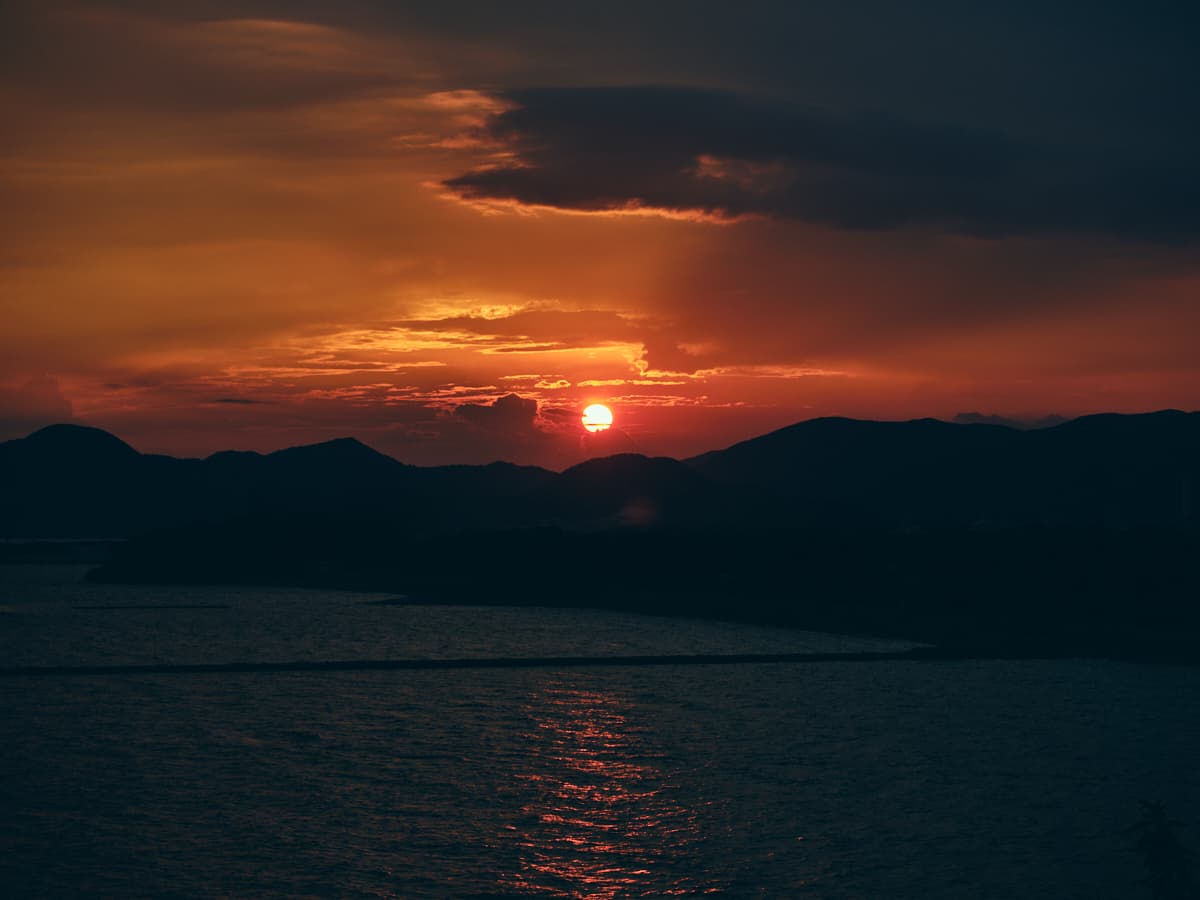 The promontory Ako Misaki, one of Japan’s Top 100 Sunset Spots.
The promontory Ako Misaki, one of Japan’s Top 100 Sunset Spots.
A perfect way to end the day in Ako is to watch the sunset from the Ako Misaki promontory. The sun sinks beyond the islands of the Seto Inland Sea, painting the sky and water in deep reds and golds—a sight is so captivating that even locals stop to take it in. Perhaps the originator of Unka-yaki, Oshima Kokoku, too was once moved by this same view.
BOOK YOUR STAY IN AKO
Himeji Castle
https://www.city.himeji.lg.jp/castle/
Ako Marine Science Museum Shio no Kuni
Tenmasen
https://www.instagram.com/tenmasen_oyster/
Momoi Museum
https://www.instagram.com/momoimuseum/
https://www.tokyofoundation.org/research/detail.php?id=245





